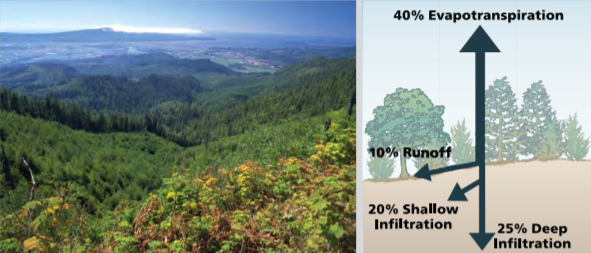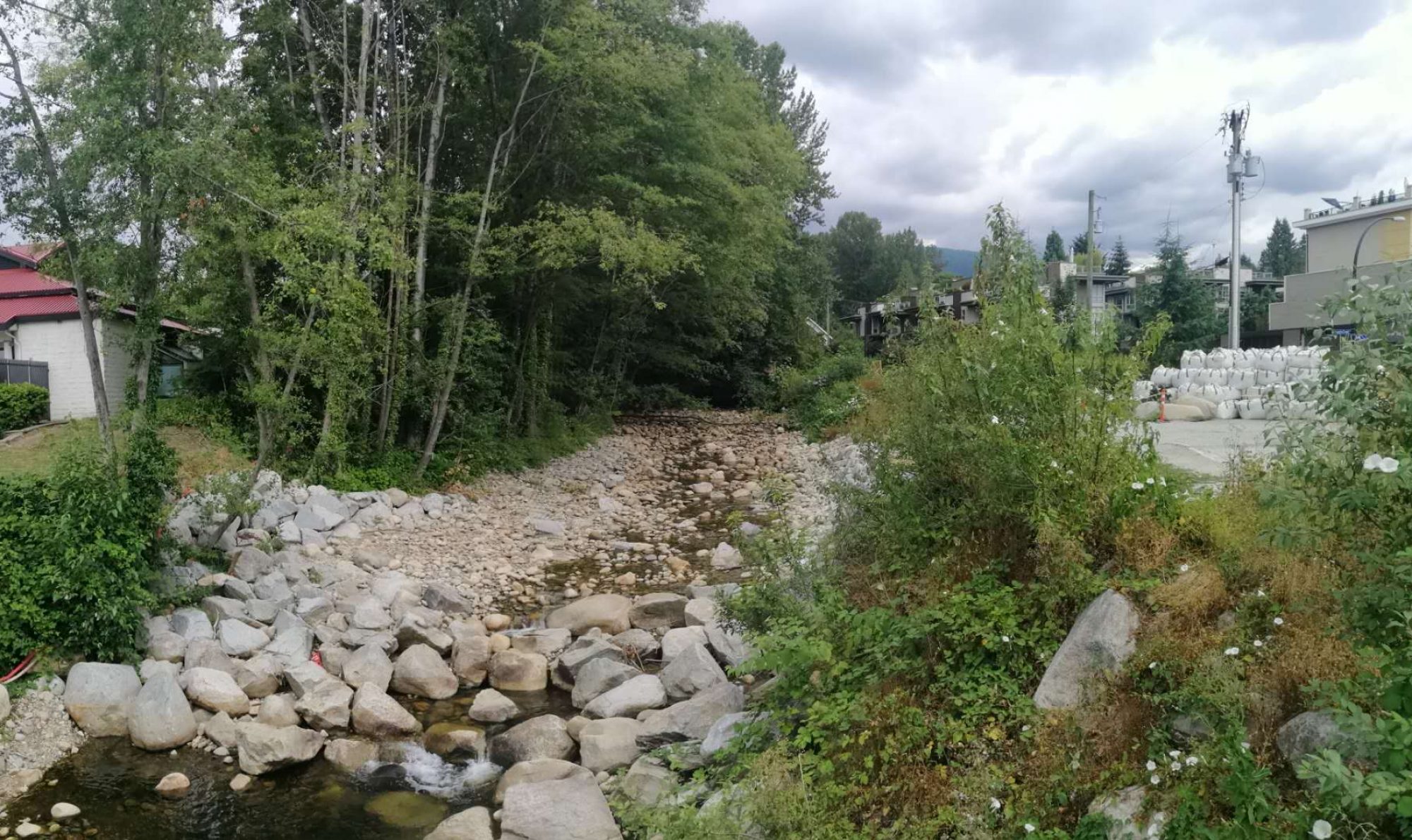Ecological/Environmental Benefits
Normally, in an undeveloped watershed, the vegetation and soil absorb the majority of the rainfall and thus slows the runoff rate over a long duration. In contrast, more intense urbanization causes runoff to accumulate faster over a shorter time, causing an earlier occurrence of larger peak-flow runoff rates. The shortening of peak flow occurrence time is among the leading contributors to urban flooding and stream erosion (Liu et al., 2014). By installing LID techniques, the disturbed watershed would be able to stimulate the natural infiltration, despite the rising percentage of impervious surface areas. Surface enhancement and storage facilities are commonly adopted LID practices, and they are cost- and ecologically effective ways to reduce the frequency of floods and recharge groundwater through mimicking natural infiltration, as well as to filter pollutants carried by the flow (US EPA, 2009).
The figures below depict differences in water movements between an undisturbed watershed (Oregon’s Upper Tillamook Bay Watershed, top) and urbanized surface condition (Seattle, Washington, bottom).


Source: https://www.lansingmi.gov
Economic Benefits
The U.S. Environmental Protection Agency (EPA) has found that considerable economic benefits could be achieved through the incorporation of LID practices. Specifically, LID practices require less financial commitment relative to building underground drainage systems and reduce the potential economic loss from floods (US EPA, 2007).
Examples of Economic Relief
- A 184-lot community with LID practices in Dane County, WI was reported to be $7,000 cheaper to develop, 50% faster to sell, and 12 – 16% more to profit compared to conventionally established communities (Mohamed, 2006).
- A building with a green roof covering over 50% of the structure can receive a one-year tax credit of up to $100,000 in New York City (MacMullan, 2010).

 Follow
Follow